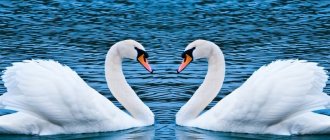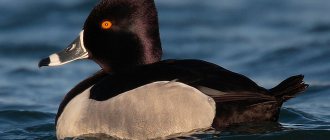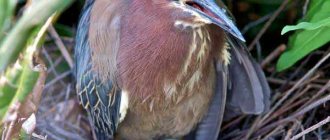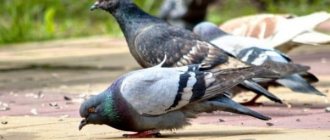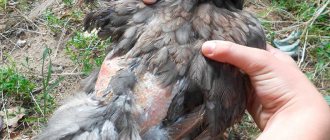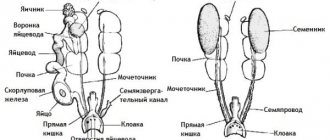In anticipation of the coming winter, our migratory birds are leaving their nesting grounds and heading south. Storks, cranes, swans, geese, ducks and many other birds rush to distant countries to spend the winter there, since they simply cannot survive in the harsh Russian winter and the lack of sufficient food. We decided to see where the birds we knew from childhood fly away and where that very avian south is located.
About a third of all bird species nesting in our country are migratory. Different species of birds choose different countries for wintering, and some species, divided into several populations, winter in several regions at once, similar in their climatic parameters and convenient for migration. Egypt, India, China, the American state of California and even South Africa - this is an incomplete list of regions where representatives of the Russian fauna spend the winter.
Gray cranes
Among all the cranes living in Russia, this species is the most numerous. Gray cranes nest almost throughout the entire country from the western borders to Transbaikalia and Yakutia. For the winter, these birds fly away in different ways and choose the shortest migration routes. Gray cranes from European Russia and Western Siberia spend the winter in Turkey, Iran, Iraq, and part of the population winters in Egypt and Sudan. And gray cranes from Central and Eastern Siberia prefer to go to India and Southeast China for the winter.
How do ornithologists study birds and their migration?
Bird ringing is one of the methods used to study them. Scientists place a small, individually numbered metal or plastic ring on the bird's leg or wing. They also use special nets known as mystic nets as a way of capturing wild birds for research.
This way, birders can capture the same bird multiple times, measure and weigh it, and collect other important information over long periods of time. Sometimes scientists use satellite data to track bird migration routes.
Common cuckoos
Cuckoos also do not sit still and with the onset of cold weather they set off on a long journey. The majority of cuckoos living in Russia choose India, Vietnam, Thailand and Malaysia as their wintering grounds. It is possible that part of the population from European Russia spends the winter in Africa, south of the equator.
The danger of migration
Sometimes birds must fly through harsh habitats, such as deserts where there is little water or oceans where there is no place to rest and feed.
Even if they find food and water, the birds need to land on the ground, where they risk becoming prey.
There may be many predators along the migration route. Depending on their size, migrating birds become prey for wild cats, foxes, wolves, humans and other animals. Some birds may be attacked by larger bird species while in flight. Sometimes difficult weather conditions make the flight difficult and even lead to death. It happens that birds collide with airplanes, which is dangerous both for themselves and for the airplanes.
Whooper swans
These majestic and beautiful birds nest in vast areas from the tundra to the mountains of Southern Siberia, choosing lakes rich in food. For wintering, whooper swans also choose a region closer to the main nesting site. The inhabitants of European Russia fly to the Black Sea, Turkey, Romania and Bulgaria. Whooper swans from Western Siberia prefer to winter in the Caspian Sea, Iran and Azerbaijan, and birds from Eastern Siberia and the Far East fly to China, Korea and Japan.
Where do birds fly for the winter?
The pack follows its instinct. Old individuals pass on routes to young ones. Birds are considered intelligent creatures - this is indicated by their excellent orientation to the stars or flights at night. There is an assumption that the navigation of birds depends on the magnetic field.
Scientists believe that the beak contains mineral and iron - it serves as a compass.
More often, birds settle in places that are similar to their native ones. The forest is more suitable for nesting. Zones must have a warm climate. Therefore, birds fly to places where living conditions are practically no different from their usual ones.
Gray cranes
Numerous individuals can be found from Transbaikalia to Yakutia. In winter, they leave the region, choosing the shortest routes. Turkey, Iran, Iraq and India are preferred as new habitats.
Common cuckoos
This bird is distinguished by two things - a specific ability to predict the amount of time a person has left to live and laying eggs in other people's nests. Despite the last fact, the cuckoo will take care of the chick, but after it hatches. Individuals prefer to eat all day long - their diet consists of a large number of insects. Since they compete for food, they do not form flocks. However, they also fly away for the winter alone. The final destination is Africa, Asia and Arabia.
Whooper swans
We are talking about majestic and beautiful birds, whose nests are usually located in vast areas of the tundra and mountains of Southern Siberia. They choose lakes with high food content. During wintering they do not fly far. The ideal places would be Türkiye, Romania and Bulgaria.
White storks
European inhabitants. They love challenges, which is why they are found in South-East Africa in winter. Some individuals travel to Tanzania and Ethiopia.
Rooks
We are talking about the only representative of the Voronovs who leaves their own home in the winter. Recently, cases have become more frequent when individuals remain “at home” - they simply equip their nest better and stock up on food.
Many nomadic rooks begin their journey in October. The month of their return is considered to be March. The bird usually winters in Turkey.
White geese
With the onset of November, the geese fly away. You can easily recognize them in the sky, as the flock forms a wedge. One school contains ten individuals. The leader is always located in the center, leading the other winged creatures. Wintering areas have a temperate climate.
White-tailed eagle
Predators occupied the entire territory of Russia. They fly to Pakistan and Iran for the winter. Some individuals fly to China and Japan.
Kites
This species of bird prefers to fly far away, for example, to Africa. It will not fly to regions with a humid equatorial climate.
Black swifts
The wintering of these birds occurs at the beginning of August. They spend three to four weeks on the journey. They fly in flocks, sometimes stopping to rest. They are distinguished by their speed and excellent reaction to capture food on the fly, for example, insects. This is an ideal option for birds, because then they don’t have to stop extra to find food. Swifts have simplified the hunting process for themselves - they often fly during the daytime, so they can easily see their prey. The favorite wintering country for swifts is the island of Madagascar and all the warm places in Africa. They love hot climates and lots of insects.
Arctic tern
Antarctica is considered their wintering place. Birds fly around the globe twice a year.
Swallows
Due to their small size, it is difficult for them to travel long distances, so they put a lot of effort into doing so. Swallows reach warmer regions gradually, with regular breaks. Not everyone knows that their legs are not designed for walking, so most of their life is spent flying. Swallows winter in Turkey. They begin traveling in early autumn and arrive home in March. Upon arrival, swallows continue to use their nests from last year.
gray heron
They fly away at the end of August. Because of their large wings, they are immediately able to cover long distances. The flight altitude reaches up to two kilometers above the ground, which is why they are so difficult for humans to see. For this purpose, scientists even deliberately monitor their movement. Herons winter in Holland.
Nightingale
A distinctive feature is considered to be loud singing. It can often be heard in the forest or village. The nightingale uses nesting sites at the top of trees and eats insects and berries. For the same reasons, he flies to Africa in winter.
Starling
He usually builds nests in people's houses, as he is not afraid of them. It uses local farming as a source of constant food. In the absence of a populated area, the winged ones settle in the hollows of trees and feed on what is available in the forest. When cold weather sets in, starlings head to Asia.
Song thrush
Winged birds always stay in large flocks, so when they leave for the winter, you can see massive groups flying. This makes it easier for them to survive the journey, since the adult bird helps the young. They, like their other relatives, make stops to rest and eat. They usually travel to Europe and northern Africa.
Quail
Quail winters in the Balkans. Sometimes goes to the Middle East. With the arrival of cold weather, males set off on a journey - they scout out the path and begin to settle in new territories. Then the females take off on their journey - they arrive at already equipped areas and live there. The quail's diet includes larvae, so the forest would be an ideal habitat.
Field lark
Birds are small in size. Their nests are located on the ground, mainly in spacious fields. The basis of the diet is seeds and beetles. Their journey begins before the cold weather sets in. When migrating, they stay in flocks and head to the south of Europe.
Finch
We are talking about little birds that live in flocks and are always ready to help each other. Their diet consists of worms and fruits. Winged birds winter in southern European regions and the Caucasus. Due to their small size, it is difficult for some individuals to move long distances for the winter, so they fly to warm zones in Russia.
Oriole
The oriole is easy to recognize - it is distinguished by its bright color. This is not always a plus, because birds of prey easily notice it, which was the main reason for building nests in hard-to-reach places. For example, these could be treetops. Winged birds react sharply to weather changes, so they fly to Africa and India in August.
White wagtail
It often nests far from people near rivers. With the onset of autumn, it goes to the Mediterranean, where it spends the winter.
Robin
Forests are considered its habitat, and it builds its houses in spruce trees. Individuals fly away one by one. In April they fly home from southern Europe.
White storks
These birds live in Europe and the eastern part of their range is located in European Russia. These large birds are not exactly lovers of an easy life, because they fly to South-East Africa for the winter, making them one of the most prominent migrant travelers. Some birds settle in Ethiopia, Kenya and Tanzania, the rest fly to South Africa and Namibia.
Annual cycle of birds
The life of birds, as well as other animals, on most of our planet is subject to changing seasons. The only exceptions are those areas where tropical forests are located.
The annual cycle of birds consists of four main stages. The first of these is the breeding season. Then comes molting, the seasonal migration of birds. The last stage is wintering.
As for seasonal migrations, they are not a continuous period for birds. There are flights in spring and autumn. At the same time, they are separated from each other by the wintering stage. The spring migration of birds can be considered as a phenomenon that is partially associated with preparation for the breeding stage. Autumn migrations are a search for food to preserve the species.
Rooks
The early arrival of these birds is associated with the approaching spring, but they also fly from different places. The main wintering regions of rooks are located close to the nesting sites. Rooks from Western Siberia fly to Kazakhstan, Turkmenistan and Uzbekistan, and rooks from the northern part of European Russia have chosen the Black Sea coast. At the same time, some of the rooks that nest in the Stavropol, Krasnodar Territories and other southern regions do not fly anywhere at all.
What makes a bird, a bird?
All types of birds have feathers. There are other characteristics that are common to the class of birds, but feathers are the only feature that is completely unique to these animals. Many may say that flight is what makes birds special, but did you know that not all birds fly? Emus, kiwi, cassowaries, penguins, ostriches and rheas are birds that do not fly. Flightless birds such as penguins are excellent swimmers underwater.
Birds have many interesting adaptations that allow them to fly. Light but strong bones and beaks are an adaptation to reduce weight during flight. Birds have unique eyes, ears, legs, and can also build nests. Some species are capable of making beautiful sounds.
White-tailed eagle
These large birds of prey are found in almost all territories of Russia, although they are extremely rare. White-tailed eagles go to Iran, Pakistan and Afghanistan for the winter, while birds nesting in the Far East prefer to fly closer to Japan, Korea and China.
Conclusion
Many people believe that birds fly away because they are not comfortable with changes in the weather. Most migratory birds have good, warm plumage that traps heat. However, the main reason for flights is the lack of food in winter. Birds that fly to warmer climes in winter feed mainly on worms, insects, beetles and mosquitoes. During frosts, such living creatures either die or hibernate, so during this period of the season the birds simply do not have enough food.
Kites
Kites that fly to the European part of Russia and the southern regions of Siberia for the summer are also not averse to flying long distances for the sake of a comfortable and warm winter. These birds of prey winter over vast areas of sub-Saharan Africa, excluding regions with a humid equatorial climate.
Wintering places
To which warm regions do birds fly? A large concentration of birds is observed in winter in the Nile Valley. Some Arctic and Siberian birds fly to their African wintering grounds. Their numerous flocks are also located in the southern regions of China, India, and the islands of the Indo-Australian archipelago. Quails and waterfowl fly to northern Africa and Western Europe. The path of some bird species to wintering areas is very far. Thus, Icelandic sandpipers and East Siberian anemones reach the shores of New Zealand.
Research by ornithologists helps answer the question of where birds fly for the winter. Thus, by banding the birds, they established that our blackbirds and starlings rest in the south of France and Portugal. They settle in Spain and Italy. Ducks and cranes love to travel to the banks of the Nile. Hoopoes and nightingales winter in the African savannah.
Some species of waterfowl do not leave the territory of Russia. In cold seasons, they settle in reserves located in the Southern Caspian Sea. Mallard ducks can be found in winter in Transcaucasia. They rest on the Azov and Black Seas.
To what warm regions do birds living in the north of the American continent fly? Here their migration, due to the influence of the Gulf Stream, goes only in a southerly direction. Thus, Arctic terns, which live in the north of America, settle for the winter in the south of the continent. Sometimes these birds migrate to African countries. They also end up in Antarctica.
Black swifts
These birds often nest in Russian cities, and their presence is easy to notice by their characteristic calls. Black swifts are one of the fastest birds on the planet and are not afraid to fly long distances. Most of the Russian swifts reach the very south of Africa and winter in South Africa, Namibia, Botswana, Angola, Zambia and Mozambique. But a small proportion of black swifts winter in India.
How do birds feed during migration?
Some birds eat regularly during migration, while other species store special high-energy fat in their bodies before long flights. This allows you to not think about food for several weeks.
Most birds that need food during migration fly at night in small flocks. They feed and rest during the day to avoid some predators.
Arctic tern
But the most outstanding migratory birds of our fauna are Arctic terns. They nest in the polar and subpolar regions of Russia, but for the winter they fly to Antarctica, that is, these birds fly across the entire globe and do this twice a year. Apparently, the climate in Southeast Asia or Africa is not the same, and Arctic terns prefer the cool polar summer rather than the tropics.
The material is copyrighted; when copying, a link to the article or the website travelask.ru is required
How do birds navigate?
Navigation is complex because it requires birds to understand three things: their current location, their destination, and the direction they must follow to get there.
Some birds use the Sun and stars for navigation. Others navigate by natural features such as rivers, mountains or coastlines. Some birds can even use their sense of smell. Although birds are also capable of moving on cloudy days and flying across the ocean, where there are no clear landmarks. So how do they do it?
Scientists have concluded that birds sense the Earth's magnetic field thanks to magnetoreception. Birds' beaks contain something called magnetite, an iron-containing mineral that acts as a compass. Other scientists believe that birds can see the magnetic field with their own eyes. Science doesn't yet know everything about bird orientation, but they probably use multiple navigation methods.
Which birds spend the winter at home?
Not all birds fly south, because there are many species that have adapted to living in cold weather. For the most part, they feed from garbage cans and also visit landfills. They are often fed by people who place seeds in special feeders.
The following birds do not leave their homeland:
- Sparrows.
- Bullfinches.
- Tits.
- Pigeons.
- Crows.
- Woodpeckers.
- Shchury.
They can be seen on the streets, in parks and forests at any time of the year. At the same time, it wouldn’t hurt for people to at least sometimes feed the birds, since in cold weather they often have to go hungry.
Bird signs for spring
Early rooster crowing in severe frosts is a harbinger of warm weather. A bullfinch chirps under the window - a thaw. The white wagtail, a recognized harbinger of ice drift, always arrives on the eve of the opening of rivers.
Rook on the mountain - spring is in the yard. The rook has arrived - the snow will melt in a month. The seagull has flown in - soon the ice will melt.
The rooks arrived before March 14 - the snow will melt early. The rooks fly straight to the old nests - there will be a friendly spring, the hollow water will run away all at once. The rooks arrived early - in anticipation of a warm spring.
Best articles: The largest land, sea, predatory and other mammals
The lark began to sing - it’s time to go out into the arable land. When the nightingale begins to sing in mid-May, spring will come together. A migratory bird flies together - and spring will be friendly. The early arrival of cranes means early spring.
Who flies off first
The species that feed on insects are the first to fly to warmer climes. Swifts already fly south in September, because they fly high and catch insects there. As you know, in such conditions food disappears faster, since it is much colder at altitude. The swift prefers to winter in Africa or in southern India, where there are all conditions for wintering insectivores.
Immediately after the swifts, swallows fly south, passing the sea, the Sahara Desert and stopping in southern Africa. They feed on dragonflies, which they catch on the fly.
These insects die in cold temperatures or hide in shelters. As a result, swallows have nothing to eat, and they have to form flocks and go to more suitable regions. They certainly arrive in their native region in March.
Airspeed
The flight speed of birds during migration is relatively low. One of the slowest is the quail - it flies at a speed of approximately 40 km/h ; the black swift is among the fastest (160 km/h). But during the flight, birds can spend a lot of time on stops, and in general, their long journeys - for example, to Africa - can last for 2 - 4 months. The speed of spring migration when migrating species return is higher - in spring birds return home faster than in winter they fly to wintering grounds.
Interesting birds that live and are found in Russia
Russia is famous for its diversity of flora and fauna
The territory of the country is inhabited by a large number of birds, which attract the attention of both indigenous residents and tourists.
Capercaillie
While singing, the bird loses its hearing, which is why it was called that. Males are not only brighter in color, but also have more females. The capercaillie flies heavily and with a lot of noise, which is why it leads a mostly sedentary lifestyle. The largest representative of the grouse order, nests on the ground. Wood grouse are herbivores, but the chicks are fed insects and spiders. In captivity and in freedom, this species can produce joint offspring with black grouse, which are called mezhnyak.
Crow
Numerous experiments have proven that the raven is the smartest bird and is capable of reasoning at the level of analogies. Birds can express various emotions, empathize, imitate sounds, distinguish and remember faces. Having discovered the body of a relative, the crows cry out heart-rending sounds for some time, and then freeze on the branches with a sad look. Crows love to have fun: they slide off snow-covered roofs and play with tennis balls
This is how birds attract the attention of their fellow birds
Starling
Starlings arrive in Russia in early spring. They can burst into trills, taking short breaks. They also imitate the sounds of other birds and animals. The most experienced warblers have up to 40 alternating sounds in their repertoire. Even in the nests, parents begin to teach the chicks the art of singing. During the mating season, the starling's nose changes color from black to yellow. The bird's flight speed reaches 50 km/h.
Common nightjar
The nightjar actually eats parasitic insects on cows, sheep or goats. The inconspicuous bird is known for its extraordinary singing. The male periodically changes the volume, pitch and frequency of the trill, which can be heard 600 m away.
The elongated body, like that of a cuckoo, does not exceed 28 cm, and the nightjar weighs no more than 100 grams. In the air, these birds can be confused with a swift or a falcon, since their flight is energetic and maneuverable, but at the same time silent.
Flamingo
There are 6 species in the flamingodae family in the world. The largest and most common is pink, reaching 130 cm in height. The bright color of the plumage is given by lipochromes that come with food. To reduce heat loss in the wind, flamingos alternately hide their legs in their plumage.
Birds live on the banks of small bodies of water in colonies of up to hundreds of thousands of individuals. The thick skin on the legs allows you to stay near salty and alkaline bodies of water. Birds can tolerate high temperature changes. Flamingos do not nest in Russia, but the bird has been repeatedly spotted migrating near water bodies.
Tkachik
Granivorous birds are of medium size - body length does not exceed 17 cm. Outwardly they resemble sparrows, although the color of the feathers is individual for each species. All weavers live in flocks, and in some colonies there are up to 10,000 individuals.
Best articles: Interesting scientific facts about dinosaurs with pictures
A distinctive feature is the ability to weave closed nests. They are built as close to the neighbor as possible. Nests come in different shapes: from a small basket to collective settlements buried in the crown of a tree.
Hoopoe
A small bird up to 30 cm is distinguished by a crest of red feathers. The hoopoe's flight is low and maneuverable, but it is capable of rising to great heights. Unlike most birds, this species never removes droppings from the nest. During the incubation of chicks, the birds produce an oily liquid with an unpleasant, pungent odor. By shooting it, along with its droppings, at a predator, the hoopoe protects its offspring.
Mandarin duck
A small waterfowl duck, reaching only 25 cm in length, is distinguished by its bright color. The mandarin duck builds its nests in hollows at a height of up to 15 m. The male has a crest and is brighter in color than the female. This species does not interbreed with other ducks because it has a smaller number of chromosomes. Mandarin ducks are able to rise vertically into the air from water or from land. In Russia, the bird is listed in the Red Book. Local residents breed it in parks.
Nightingale
It is considered the largest of the songbirds. The nightingale reaches a length of 17 cm and weighs about 25 grams. Migratory birds winter in northern Africa and return to their native lands in late spring. Children and adults enjoy listening to the singing of nightingales. The bird is diverse in species, each of which has a distinctive color. Birds live in different parts of the planet.
Sensational discovery!
However, on May 21, 1822, a sensation spread around the world! Near Mecklenburg, Germany, an 80-centimeter arrow was found in the body of a dead stork, piercing the bird’s neck. The arrow was not from here and belonged to one of the African tribes. A desperate brave man with an arrow in his throat managed to overcome the entire migration route, returning home from the equatorial wintering grounds.
This story shed light on the mysterious disappearance of birds in winter. A stuffed specimen of the famous arrow stork can still be seen in the zoological collection of the University of Rostock.
Repeated reports of white storks with African arrows in their bodies helped make the discovery: European birds winter in equatorial Africa. However, ringing, which naturalists began to carry out since the 90s of the 19th century, made it possible to accurately determine the places where birds fly to for the winter.
